|
Regional History History of Timbering County Histories Oral Histories Calhoun County Gulf County Ronnie Brake Dave Maddox Tom Parker Jackson County Wakulla County |
History: Voices from Gulf County
Tom Parker
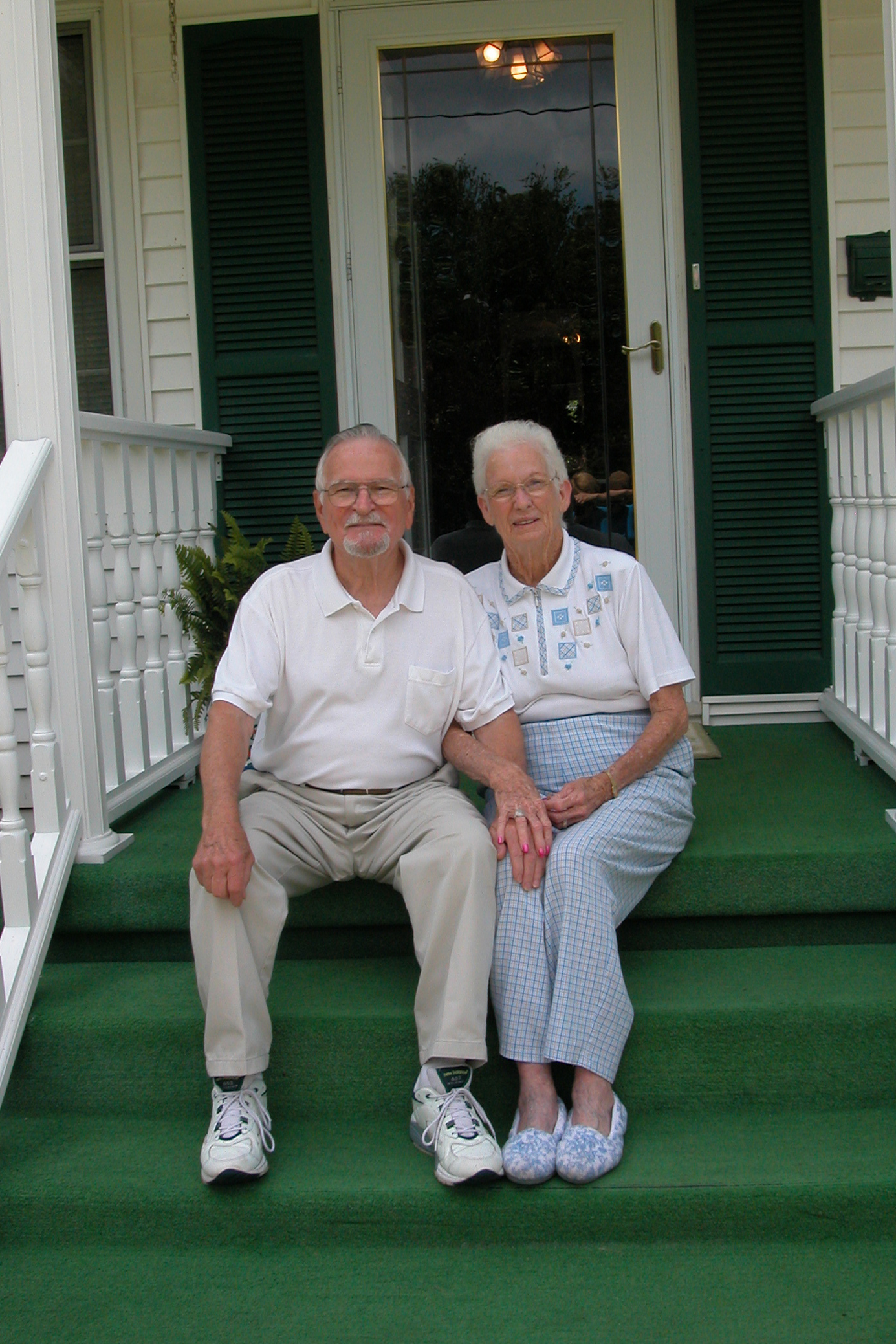 Tom and Louise Parker, Port St. Joe, 2005 |
Tom Parker was born in Port St. Joe, Florida, June 25, 1927, on Blossom Row in a house bought by his grandfather. In 2005 Tom Parker and his wife Louise lived on the same street six or seven blocks from where he was born.
Surrounding the Parkers' more substantial house were ten or twelve shacks constructed by the Parkwood Lumber Company in the teens for their workers. There were no screens on the windows of these small houses, and people had to burn rags to keep the mosquitoes at bay. The houses on Blossom Row were torn down in 1937 when the St. Joe Paper Company began to reshape the town in anticipation of opening of the mill. The Parkers' bungalow-style house was sold and later moved to Panama City, where it is still intact and occupied.
Listen to Tom Parker's description of the picture of Blossom Row shown below: Real Network | Windows Media Player
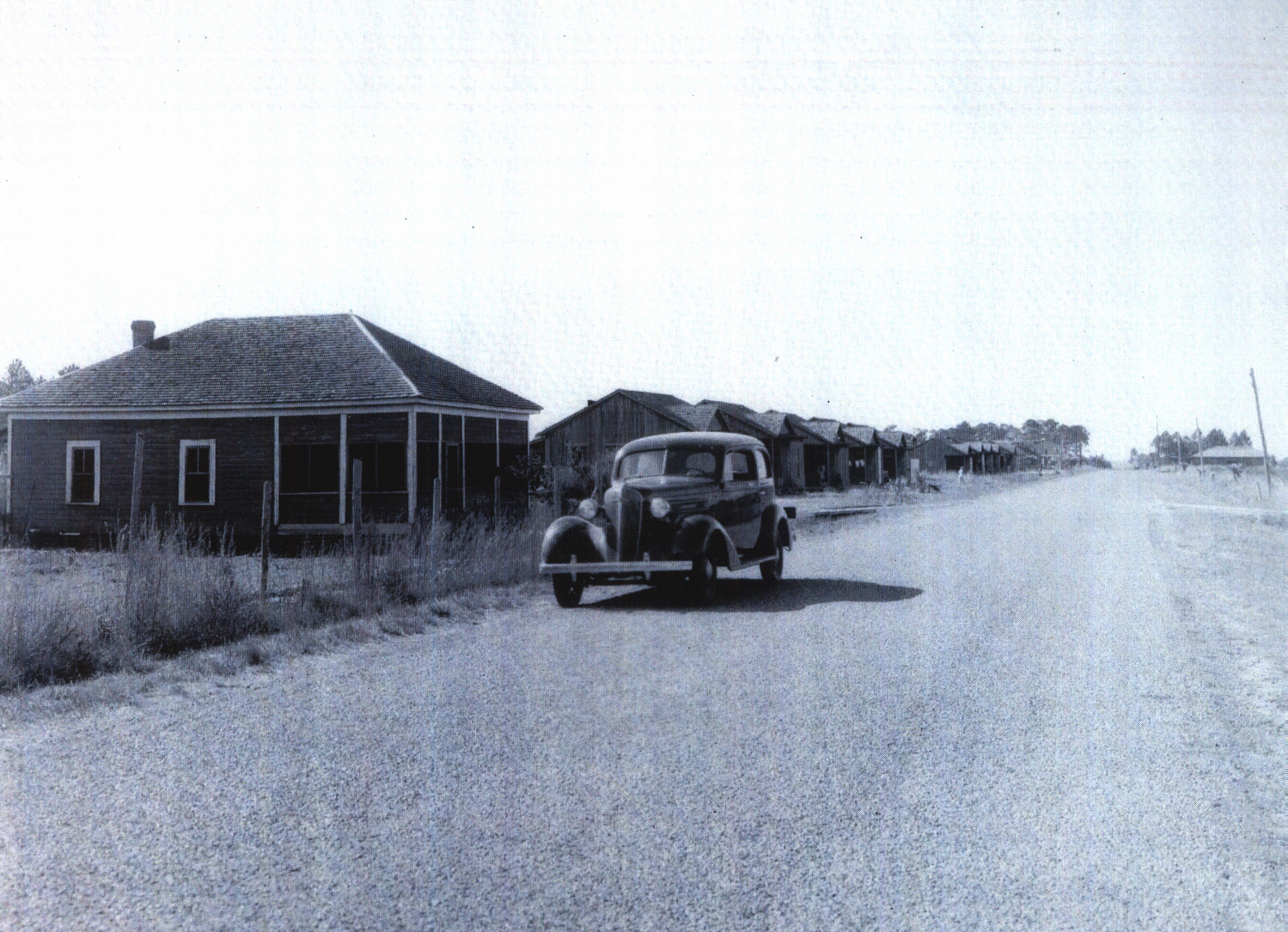 Blossom Row, 1937 |
The women of Blossom Row washed clothes in a hole dug by the State Road Commission to build up the foundation for State Road 71. The picture below shows Millie Parker, Tom's grandmother, and her friend Naomi Stevens Hardy, on Wash Day in 1937. Mr. Parkers recalls that mean boys would sometimes take his grandmother's valuable cast iron pots and throw them in a nearby pond. Although the pond was only 10-12 feet deep, nobody would dive in to retrieve them because of all the snakes on the edge and in the water.
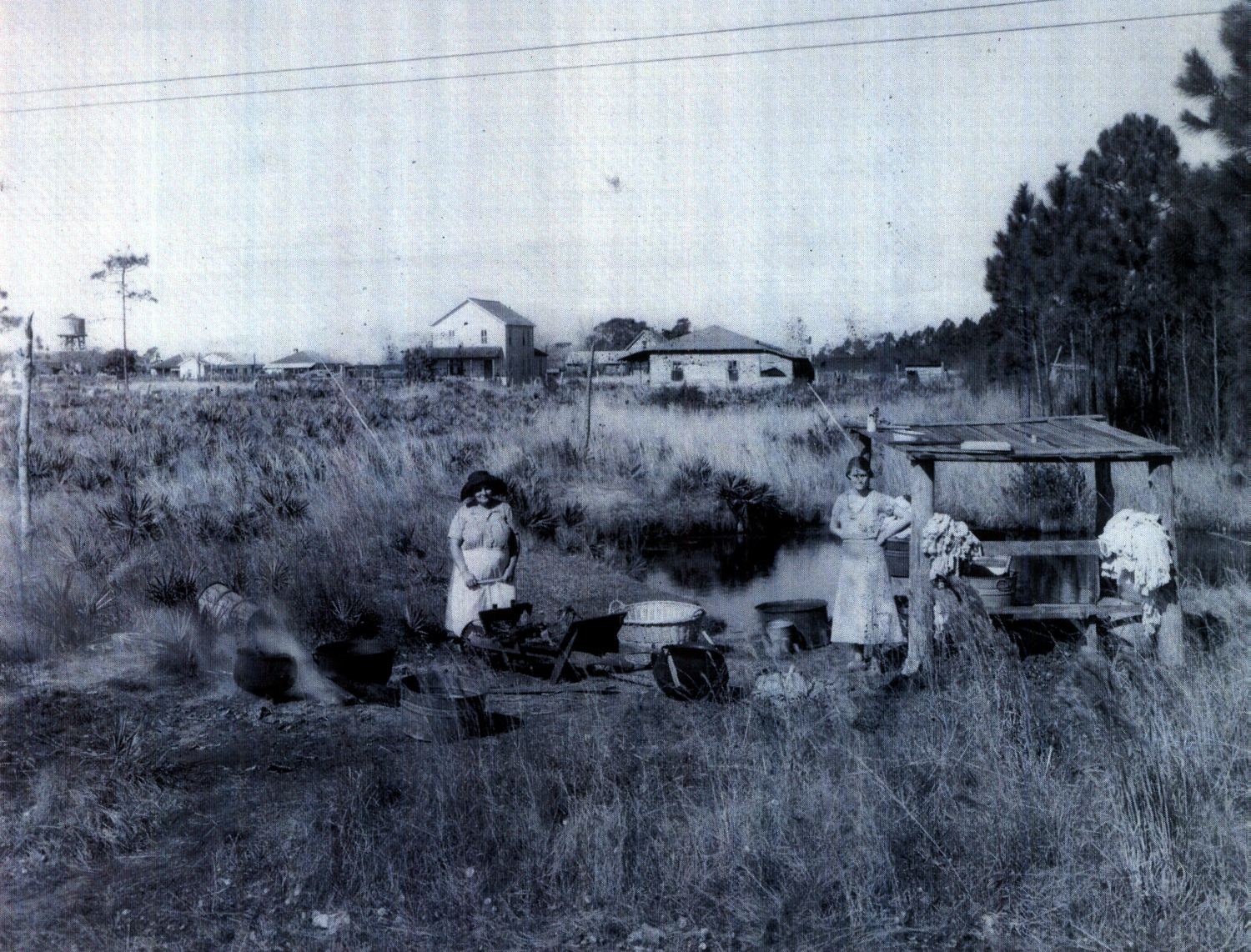 Wash Day, Blossom row, 1936, Millie Parker, left, Naomi Stevens Hardy, right |
Listen to Tom Parker's description of his childhood when "we were all poor together": Real Network | Windows Media Player
Click here to read the text of the audio Tom Parker's childhood.
Tom and his grandfather would go to the Pogy Plant dock and spear fish—big fish, sheephead and drum—from around the pilings. The Pogy Plant was built in 1919 and torn down in1936 to make way for the paper mill. The plant extracted oils from menhaden for paints and the residue was used for fertilizer. At the age of 15, Mr. Parker's father worked for the Pogy Plant for a year. “I don't know why my daddy just worked there a year,” Mr. Parker said, but it was probably because of the smell. Pogy plants smell really bad from the cooking of decaying and rotting fish.”
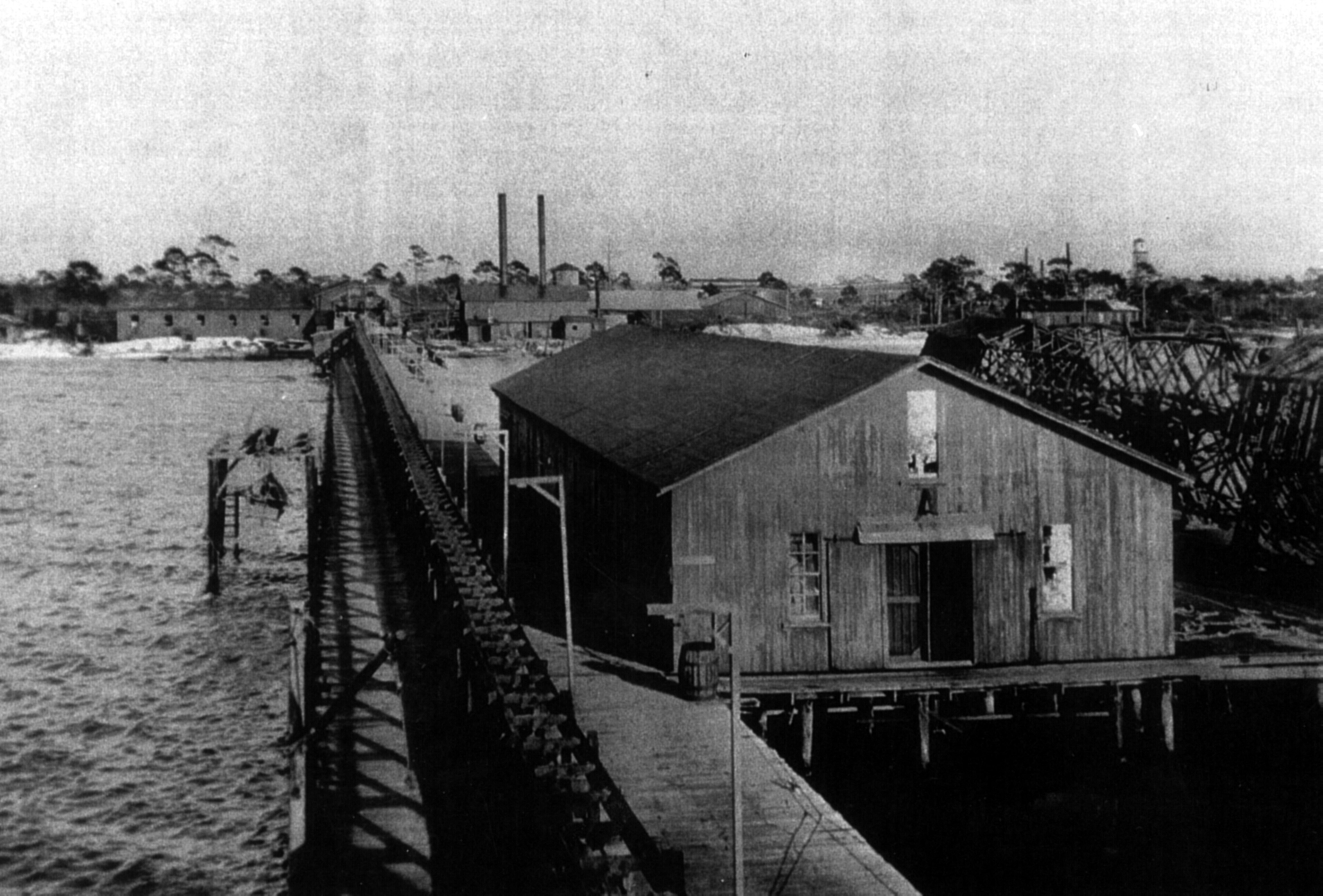 Pogy Plant, 1929 |
Listen to Tom Parker's description of the Pogy Plant: Real Network | Windows Media Player
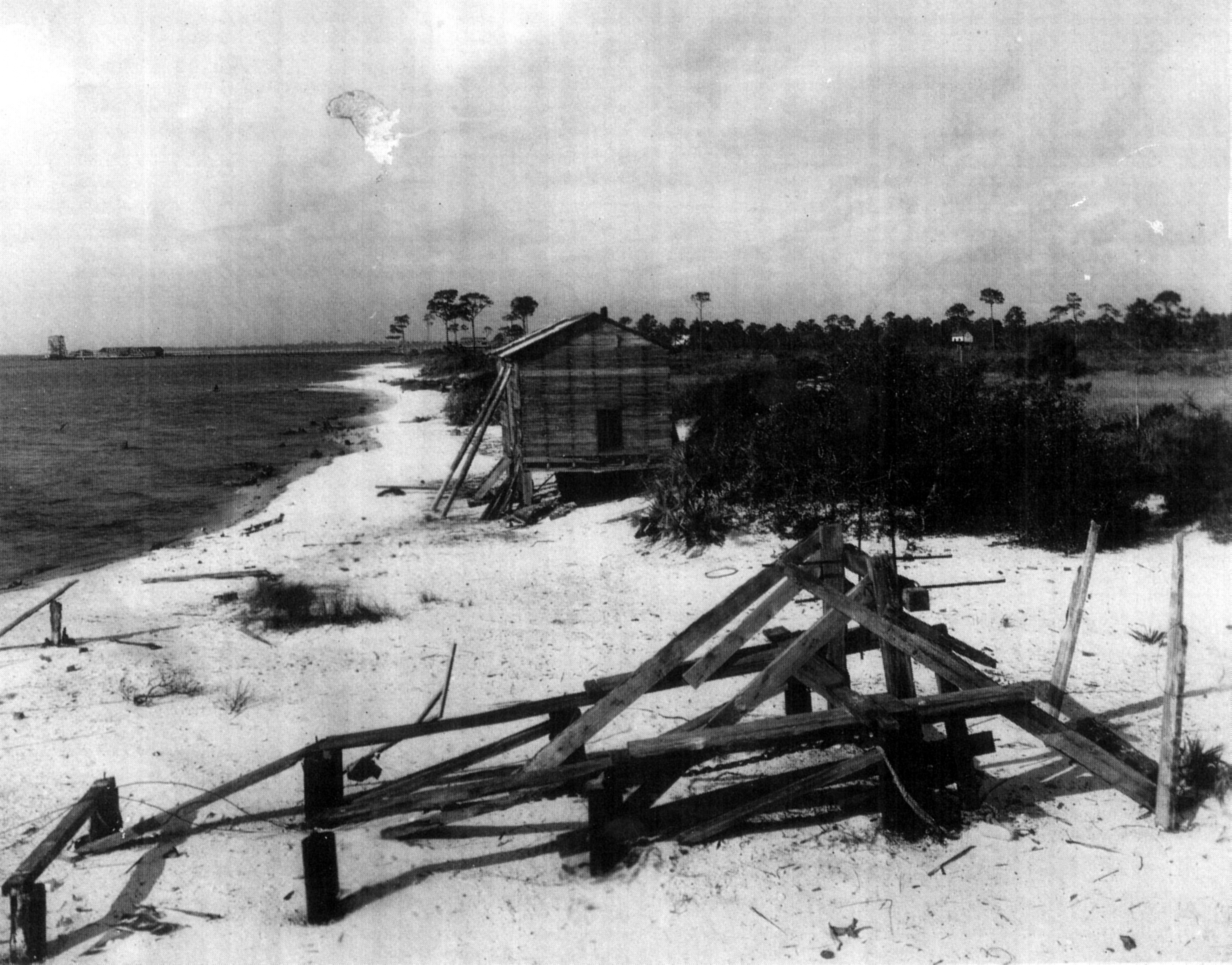 Distant view of Pogy Plant dock, 1930 |
In the 1930s, there was an open air dome theater on Third Street in Port Sr. Joe that charged an admission of 10 cents. Tom would sometimes climb up in a tree and try to look over the wall to see the picture. This wasn't very satisfactory as he could see the picture but he couldn't hear the sound.
By 1937, Port St Joe was being transformed by the St. Joe Paper Company and its subsidiary, the St. Joe Land and Development Company. In 1925, Alfred duPont had dispatched his brother-in-law Ed Ball to purchase land in the Florida panhandle. Ball acquired a vast domain for duPont, including hundreds of thousands of acres of forest land and nearly all or the town of Port St. Joe, including its docks and deep port. The St. Joe Paper Mill began operations March 17, 1938, and Port St. Joe became the headquarters of the duPont interests in northwest Florida.
Tom recalls the construction of the paper mill itself and the pumping of tons and tons of sand to create a foundation for the mill. He and his friends stand out in the big pipes and catch fish in the water sent back to the bay after the sand was separated.
Listen to Tom Parkers's description of the construction of the plant: Real Network | Windows Media Player
Click here to read the text of the audio about the building of the plant.
Blossom Row and the Pogy Pant had been torn down, the population swelled, new houses were built on Long Avenue and on Garrison Avenue, banks thrived, and new businesses opened. For the first time Port St. Joe had an indoor movie theater. “We had more doing back there then right after the paper mill came here than we do now,” recounted Mr. Parker. The Chateau, on Highway 98, adjacent to the Port Inn, was built for visiting St. Joe executives, including Ed Ball. The paper mill closed in 1998, and in 2005, the Chateau was converted to a bank. The mill has been razed, and the St. Joe Company has proposed a new luxury residential neighborhood and marina for the site.
Tom Parker worked for the St. Joe Paper Mill for 44 years (1946-1990). He worked in the chemistry laboratory although he was always more interested in electronics. The company sent him to Gainesville for a year to study chemistry in 1951. Upon his return, he was considered too valuable to the chemistry lab to be transferred to electronics. Tom Parker has only good memories of the paper mill: “I love that old paper mill. It fed us for forty-four years. Raised all my children and sent them all to school.” Health insurance from the mill paid for his two heart surgeries.
 View of the paper mill across St. Joseph Bay, 1956 |
 Workers checking paper, St. Joe Paper Company Mill, 1959 |
Today the St. Joe Company is again reshaping Port St. Joe and the surrounding area, this time as a vacation and second-home mecca for the rich of Metro Atlanta and elsewhere. Land prices have skyrocketed and houses—“nice houses” in the words of Mrs. Parker—are being torn down and replaced by mini mansions. In 1946, Mr. Parker recalls a man approaching him and Louise on the beach on a then deserted beach trying to sell them a beach front lot in a proposed coastal development for $200. He told him, “It won't ever amount to nothing.” In 2005, those lots were selling for $1.5 million.
profile by Elizabeth D. Purdum
Note: The content of the website has not been updated since 2005. The site remains online for it's value as legacy content and is unlikely to be updated.